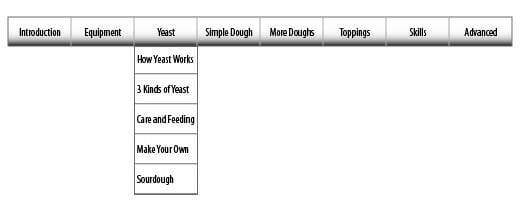Ed: You might want to read the first part of this article and the second part before starting this one.
Now it’s time to change our terminology a little bit to help us see the new possibilities I’ve been pointing to in these articles.
When I said earlier that you can “think outside the book,” I meant to think of all the different ways the same basic content can be presented, often in ways that are better suited to your readers, than simply bound up between covers or in an ebook.
Research on how people learn has shown that different people have vastly different preferences for mastering new topics, skills, or procedures. Some people prefer to read, others to listen, and some prefer watching.
I know that I use all three of these modes of learning for different kinds of topics, and I bet a lot of other people do also. That’s an important consideration for any author who intends to teach something that they really want readers to benefit from.
This also leads to the question of whether a bound book is really the best vehicle for the kind of information you are developing. For instance, an audio recording of how to stretch your pizza dough into a 12 inch round might be of limited value.
In a book, you could add color photos that clearly show the process, but that brings up other problems like the cost of developing and producing the book, and the necessity of charging a pretty high price for it in the end.
On the other hand, a simple 5-minute video would be ideal for this task because students could just watch an instructor do it, and they can play the video over and over to make sure they have it right.
A long interview on the different kinds of flour used in baking might make a great audio that you could learn from while driving somewhere. So the kind of content you have, in addition to learner preferences, determines the best way to teach each particular skill or idea.
Changing Titles
Okay, we’ve got topics in a chronological order. Now suppose instead of “Chapters” we call them “Modules”?
This gives us more of a training course in pizza making, with 8 modules. And instead of “sections” we call the individual topics within each module “lessons”?
Now our “book” looks something like this:

Simply by exposing the chronology and reframing the terminology we were using to describe the book, we’ve leapt from a fixed, bound presentation to a dynamic, flexible structure for presenting the same material.
But this arrangement—and yes, it’s basically a training course—has huge benefits over the book-only model.
10 Big Benefits of Turning Your Book Into a Training Course
Copyblogger, creators of the excellent Teaching Sells training program, call these training courses “interactive learning environments” and that’s a pretty good name for them.
And it’s the interactivity, in addition to the flexibility of the environment, that power most of these advantages.
- You don’t have to complete the entire project before you sell it.
As soon as you have a lesson outline and the first couple of “modules” finished, and can create the copy for a sales page that will explain the appeal and the scope of the course—in other words, the exact same material your would need to pitch this book to a publisher in the hopes of an advance—you can open up registration. As long as you are quite sure you’ll be able to produce the rest of the course on schedule, there’s no reason not to do this and some good reasons for it. - Participants will supply ongoing feedback on your content.
In the book-only model, you have to try to get peer review, or crowdsource feedback, but in a live training course you’ll quickly see which approaches to teaching your subject work well, and which are disjointed, hard to follow, missing prerequisite skills or concepts, or just plain don’t work. - You can orchestrate the kind of media you use for each type of learning.
For your chapter on stretching out your dough, you can create a short video. For your interviews, create audio. For basic concepts and explanations, use text. The strategic choices you have available to really help your participants get results are powerful and extensive. - Every type of learner can get the kind of instruction that suits them best.
Within the environment of your training program, you can offer many of your “lessons” in a variety of media, so learners with different learning preferences are all included. You can supply background reports as text downloads for those who prefer a searchable, printable text document, demonstrations as videos, everything can easily be hosted together. - You’ll be able to build your platform as you launch your course.
One of the most consistent pieces of advice you’ll receive from marketers, book promotion experts, literary agents, acquisition editors, and self-publishing consultants is to build your platform before you publish your book. But when you offer a training course, you start building your platform at the same time you’re creating the product. Certainly if you already have a robust platform it will be far easier to sell the course, and you’ll already have a good relationship with your audience. But this is a huge advantage for authors with only a small platform. - You can make a significant amount of money without having to write a “bestseller.”
How much do you think you’re going to get from a publisher as an advance on a niche-topic instructional book? No, not much, I reckon, not these days. And most of these books, no matter how useful, rarely achieve “bestseller” sales status. But when you turn the book into a training program, the entire model changes. Consider that for a $495 program—and each needs to be priced for its own audience—you only need to sell 20 people to gross $10,000. - Your participants will pay to help you create the course.
Since you’ve only created an outline, one or two lessons, and some sales copy, your audience is, in effect, paying you the “advance” that allows you to take the time to create the product itself. - Being the creator of a training course will enhance your reputation.
You probably already know that being the author of a book confers a certain prestige, and has helped many subject matter experts raise their fees, gain more authority, and open doors to new opportunities. Building a training course will also contribute to your standing in your field, a thought leader and trusted advisor. - You’ll definitely keep on schedule. If you’ve sold your course to a couple of dozen people and now have to create it module by module, it’s going to get done. When writing by yourself, especially on a big project like an instructional book, it’s all too easy to get sidetracked, to lose focus, and to miss deadlines. But if you know Susan and Dale and Maria and all the rest of your students are awaiting the next group of lessons, believe me, you’ll produce them right on time.
- And best of all, at the end you’ll have your book, too. As you work through the modules and lessons, everything you’re writing can be repurposed to become chapters and sections. By the end of the course, you’ll have at the minimum a first draft of your book ready to go.
I’m not suggesting that no one is going to be writing instructional or how-to books in the future, they have a guaranteed future.
What I am saying is that taking your content outside the confines of a book can yield surprising advantages. One doesn’t preclude the other. A book might become a great vehicle for selling the course itself. And many readers will pay to get access to you, as the expert, through a course structure, too.
These courses work well either as text or using more diverse media. I’ve bought and profited from a number of courses that delivered virtually all their content as articles or blog posts, straight text.
But seeing your work as a multi-media training course, one that you can sell at the beginning of the process, that will help you build your platform, and for which you’ll get instant and real market feedback, is pretty amazing.
And all you have to do is turn your table of contents sideways to get started.
Photo by photo credit: Sean Molin Photography via photopin cc



